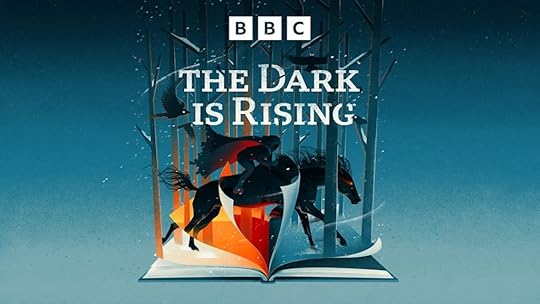His Box of Dark Materials (Part 3)

The third in our triptych of Children’s Fantasy with a dark wintry setting and/or tone is, chronologically, the link between Masefield’s series in the 30s, and Pullman’s in the late 90s. The Dark is Rising by Susan Cooper was published in 1973 and is the second in a sequence that became known as the same. It is set in the Thames Valley and tilts it, via heavy snowfall, into an estranged, enchanted land, as The Box of Delights does with the Malvern Hills in Herefordshire. Like Masefield’s novel, it too features Herne the Hunter, and a young protagonist getting inveigled in a Manichaean fight between the forces of the Light and the Dark. Instead of a magical box, the young Will Stanton becomes The Sign Bearer, acquiring six ancient signs that help him in his battle against the Dark that assails his village and community (in His Dark Materials Lyra Belacqua becomes the ‘Sign Reader’ with the alethiometer – a device that enables the user to discover the truth). Will discovers the presence of The Old Ones in his neighbourhood – The Blacksmith, John ‘Wayland’ Smith; The Rider; The Hunter; The Lady, Mrs Thorncrofte; Merriman Lyon; and The Walker, aka Hawkin (who is like a shadow version of Cole Hawlings), among others – before it is revealed that he is the last of them, with a key role to play in the final battle. The river Thames is a dominating presence, and the land around it floods, as happens in La Belle Sauvage (the first in Pullman’s long-awaited follow-up to His Dark Materials, The Book of Dust). Cooper presents us with a vision of a flooded, rewilded England, echoing Richard Jefferies’ 1885 post-apocalyptic novel, After London: or Wild England. As with Alan Garner’s Alderley Edge, the landscape around Will’s village becomes a cross-hatch of the magical and the mundane. An old track becomes The Old Track, a fact which saves Will Stanton from The Rider. The magical maelstrom that erupts is navigated by knowledge of deep place, and by the bonds of community.
During the winter of 2021 the writer Robert Macfarlane instigated an online readalong on Twitter. The book had long been a favourite of his – reading it in childhood, he has then gone on to introduce it to his children, and to bring it the attention of a whole new generation of readers and listeners, for in the following year, he worked on an adaptation for the BBC World Service, produced by BBC Sounds/ Theatre Complicité, which was broadcast to synchronise with the Christmas setting of the novel (like The Box of Delights TV series). The twelve fifteen-minute episodes chimed well with the festive holiday, being released daily at breakfast time (GMT), cultivating a shared listening experience akin to when The Hobbit and The Lord of the Rings radio adaptations were broadcast in the 70s, resulting in whole campuses practically grinding to a halt, as everyone listened in. The sound FX created by the BBC Radiophonic Workshop vividly brought to life the wintry, spectral ambience of the book – the supernatural ‘thickening’ that occurs as the apparent reality is destabilised by increasingly powerful intrusions – along with the resonant theme tune written and performed by Johnny Flynn. The Dark is Rising is intrusion fantasy at its best (to use Mendlesohn’s speculative taxonomy). Its effectiveness is thanks to a combination of a tangible setting, evocative seasonality, and the archetypal and the actual in the interweaving of the mythic, folkloric, and religious with the comforting familiarity of Christmas.
Each of these Fantasy series (in book and televisual format) – The Box of Delights; The Dark is Rising; and His Dark Materials – have all helped in restoring a sense of enchantment to the Yuletide season (with Pullman’s masterwork being only the most recent bauble to be added to the Tree of Story) reminding us of the spirit of Christmas, the wisdom of winter, and the importance of family during challenging times for all. And for that, we should be grateful to the writers, and to all who have brought their magic to life.



